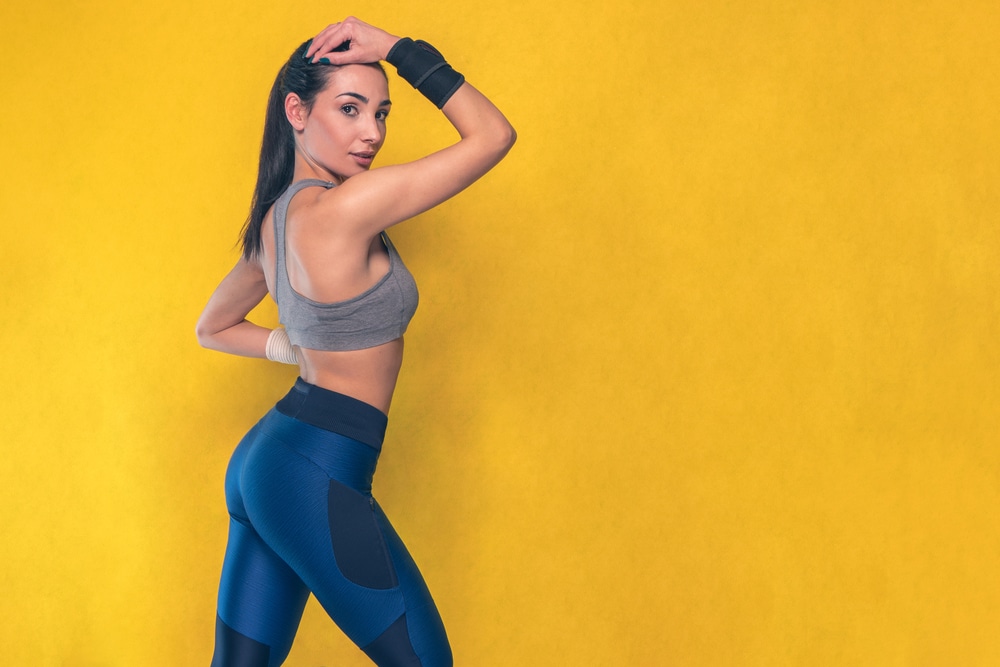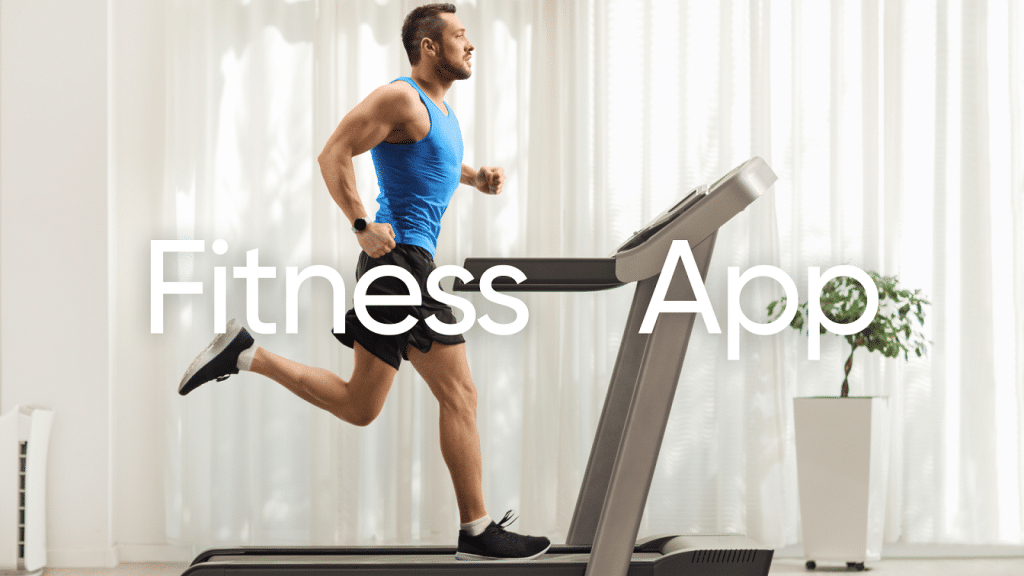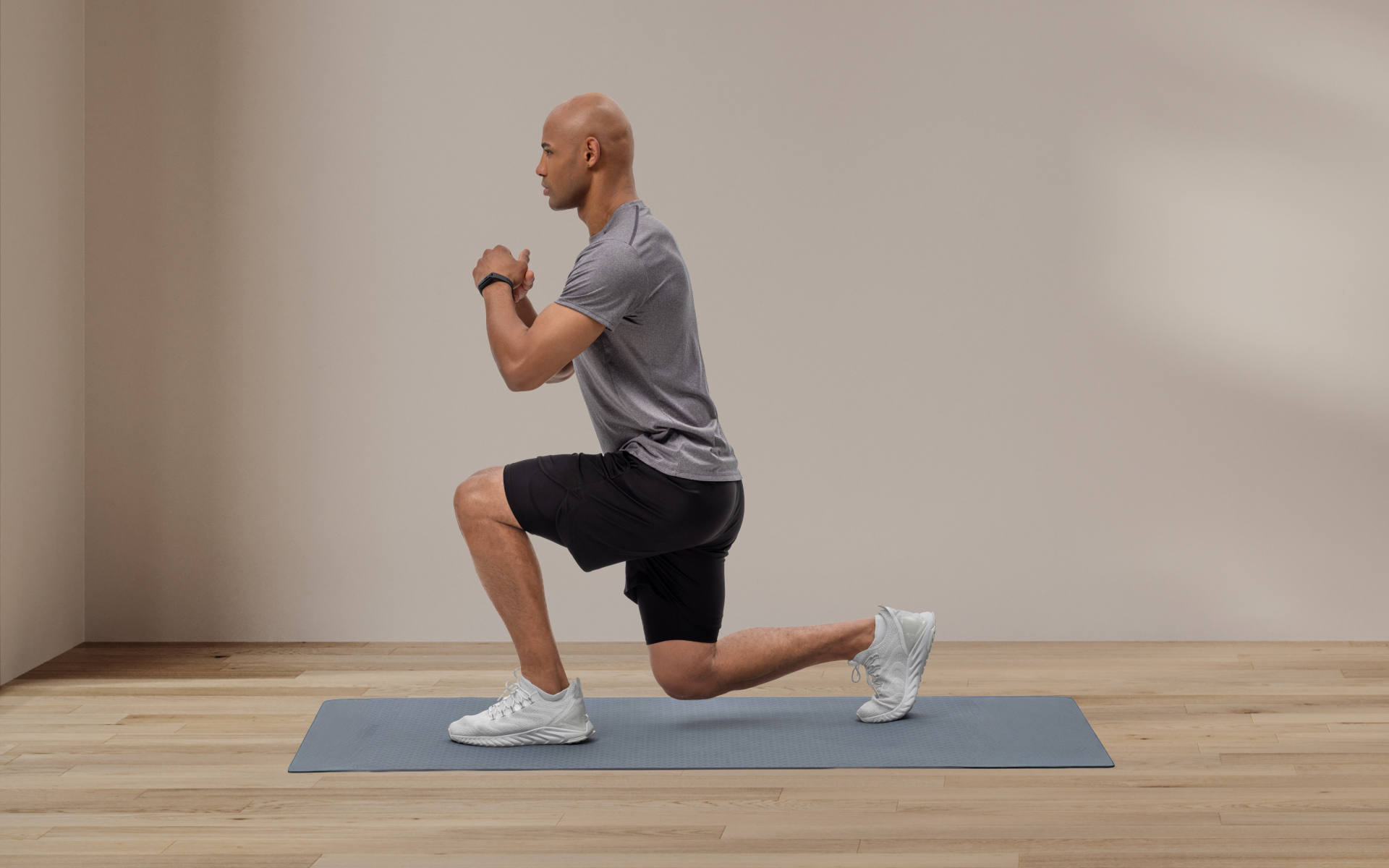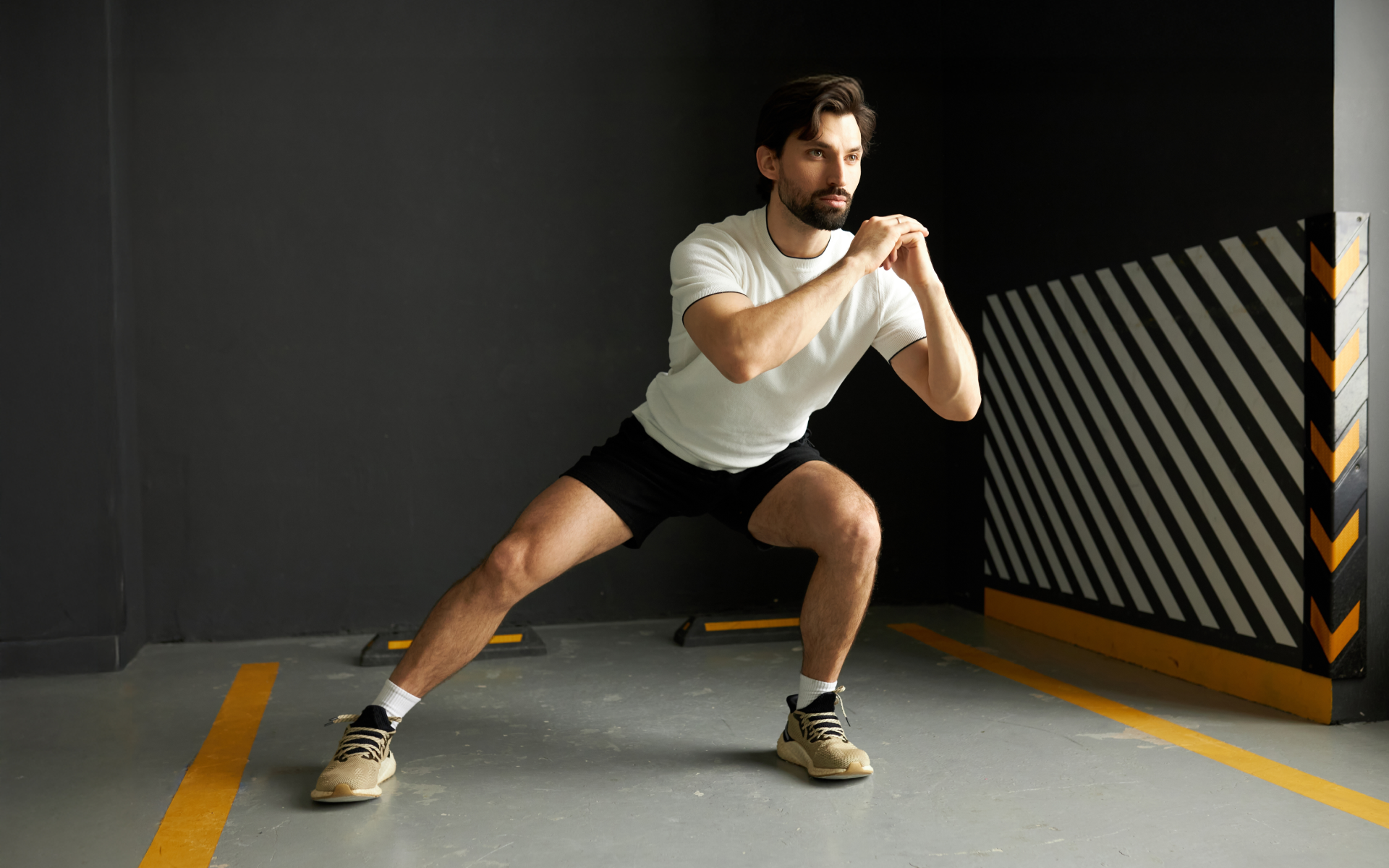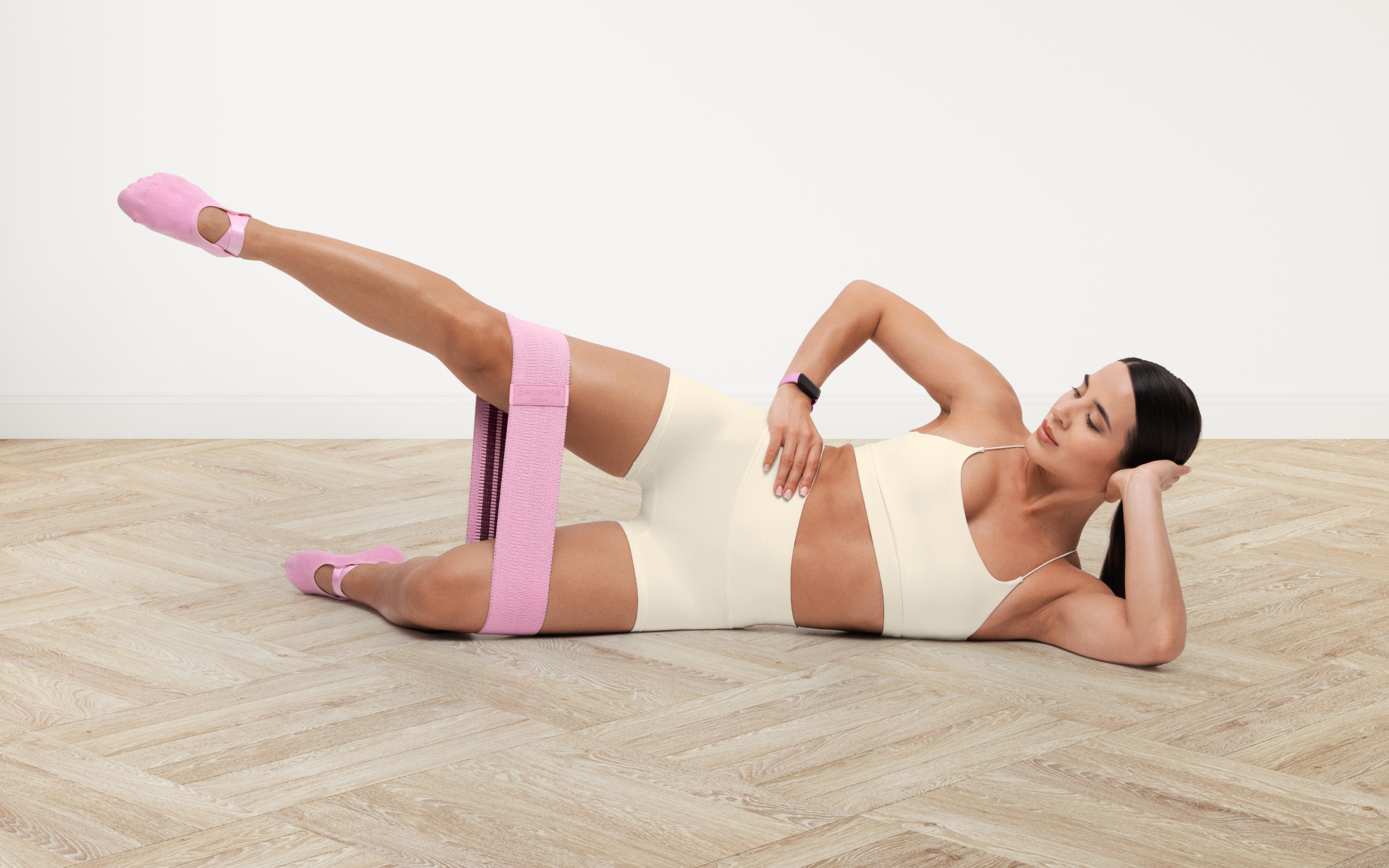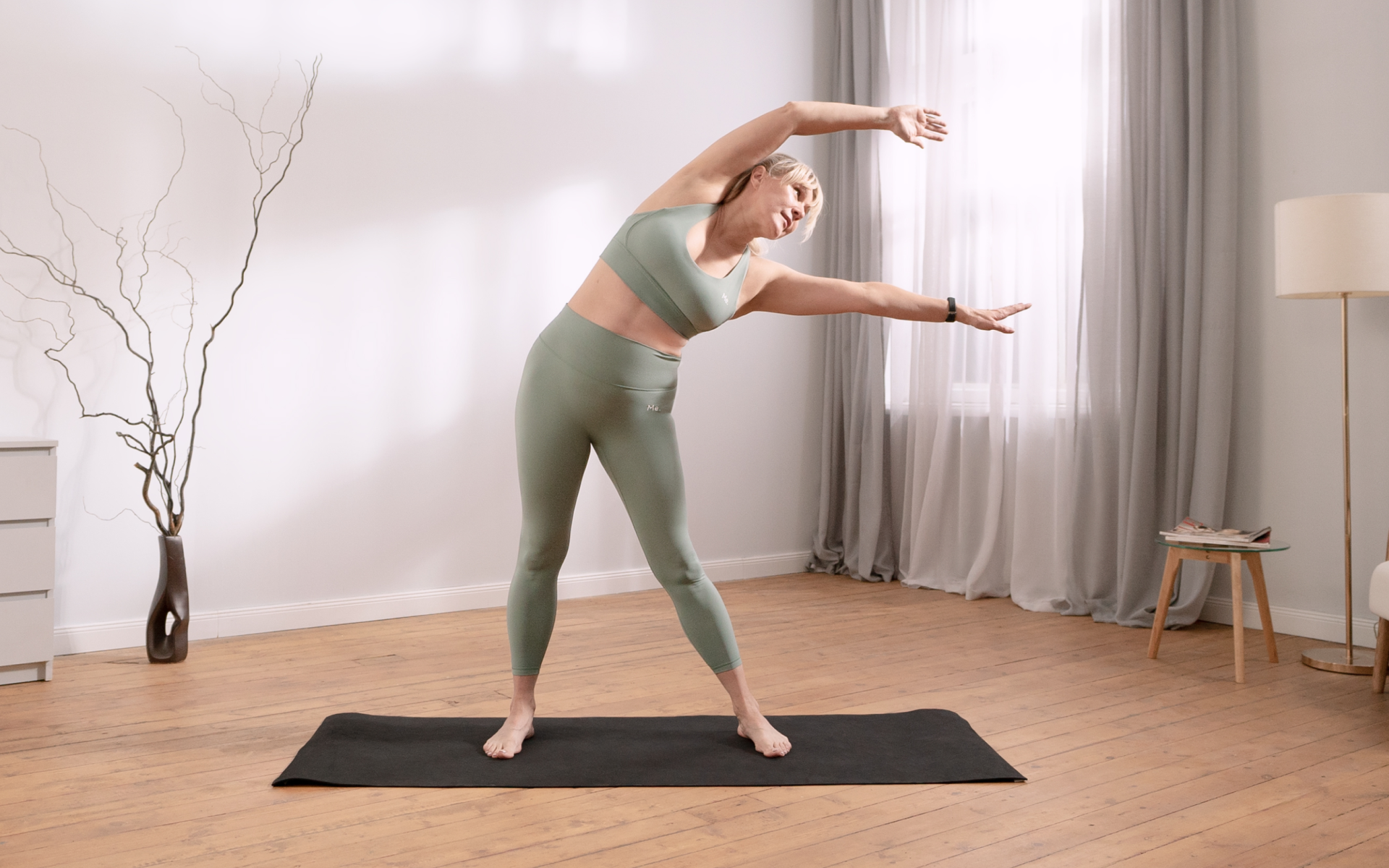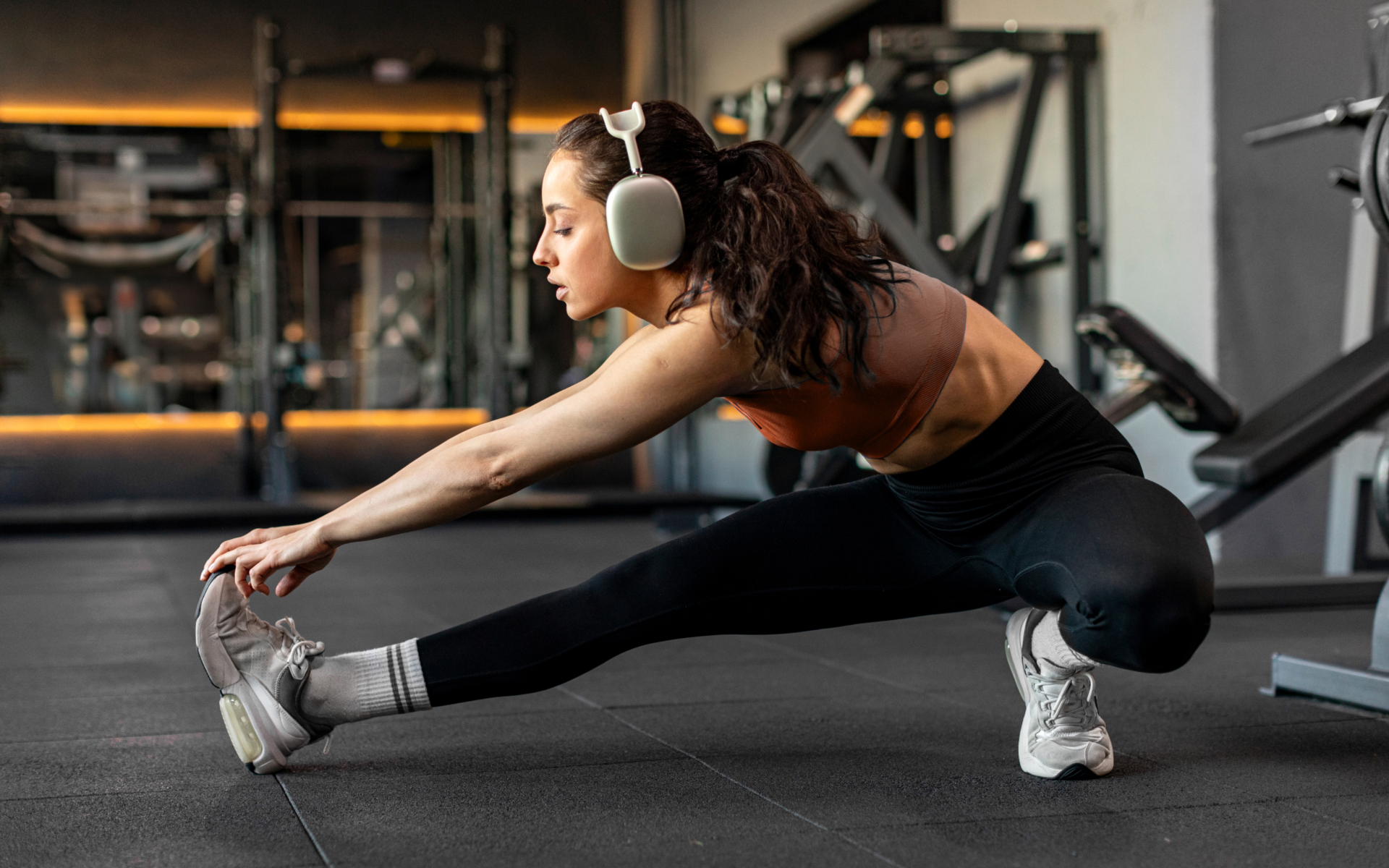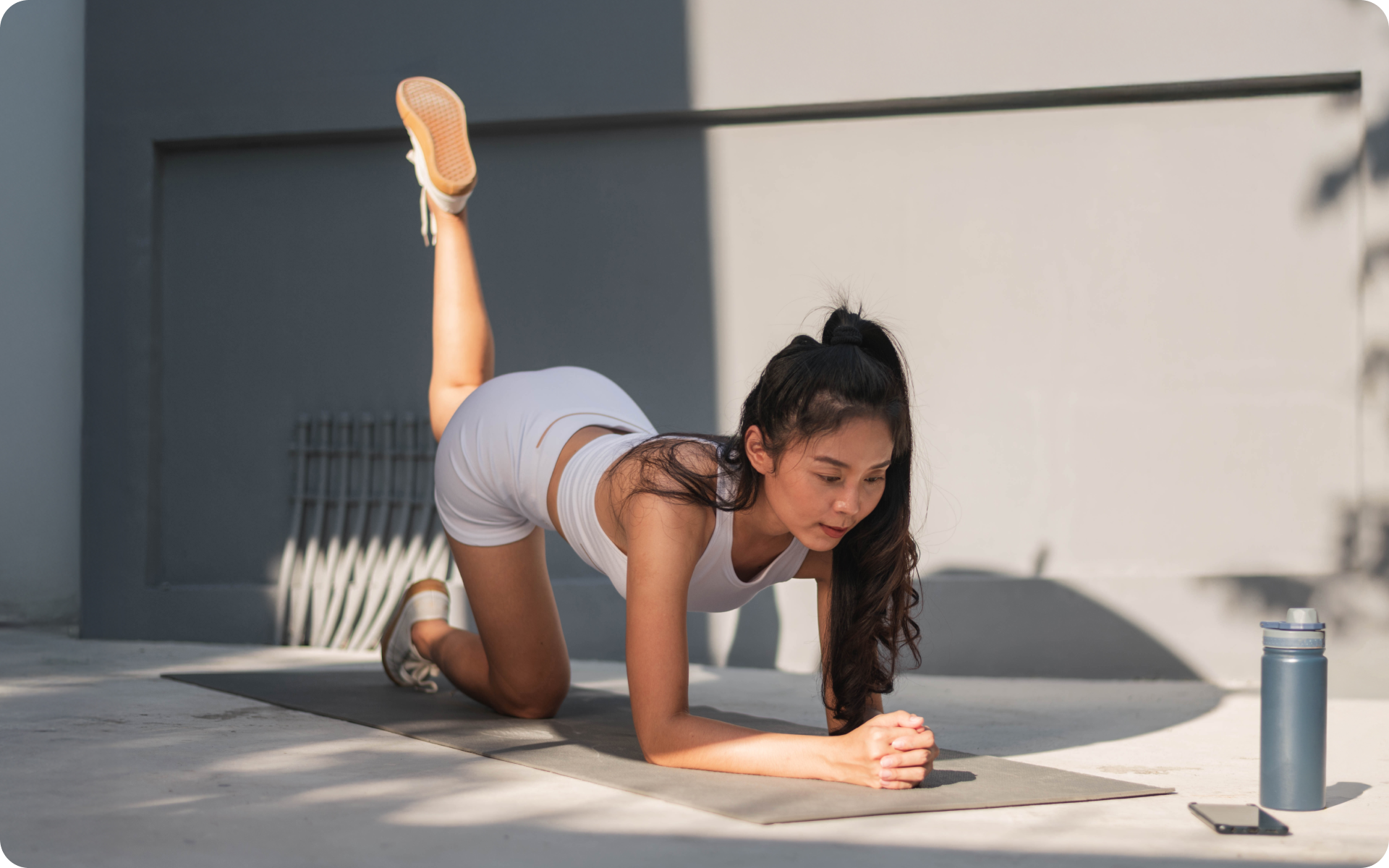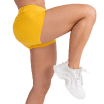Tempted to miss leg day? We can totally relate. Leg workouts are the most meme-worthy routine for one reason — they cause excruciating pain and leave you limping the next day. But, a proper leg workout is priceless. They’re necessary for building muscle, toning calves, and preventing injury. That said, finding the willpower to commit to a leg day workout can be a tall order (pun intended). Unless you have this cheat sheet — a 30 day leg challenge chart that you can use to tone your limbs in a month. Combining 5 different moves with increasing intensity, this workout challenge is just what you need to get lean legs. And if you’re one of those folks who has blacklisted leg day altogether because of its reputation for being a painful exercise in futility, we have some tips to help reduce the discomfort as you embark on this 30 day leg workout challenge.
Get your personalized
meal plan!
What Makes A Good Leg Workout?
Simplicity is the main ingredient of this 30 day leg slimming challenge. Keeping the workouts simple makes the challenge easier to stick to, and guarantees results after a month.
Leg workouts can be split into two sections: quads (front of thighs) and hamstrings (back of thighs). Quads are large muscles that give your legs their strength while hamstrings do more to increase flexibility (2). Mixing these up with squats, lunges, and leg curls will allow you to gain size as well as flexibility. All of these exercises should be done with weights unless otherwise specified. It’s important to master the moves first so that your form is correct. Then, you can increase the intensity using different variations of each exercise.
The workouts in this challenge starts with a squat movement, progresses to a hip-hinge movement, and ends with a single-leg movement. The reps increase with each day. You also have rest days to allow for muscle recovery (1).
Read More: Kettlebell Leg Workout To Build Strong Legs And Core
How Many Sets And Reps For A Proper Leg Workout?
How many sets and reps you include in the 30 day leg lift challenge depends on your fitness level and desired results.
As a beginner, it’s best to keep things simple. Start with no more than 5 exercises total for the 30-day period. Do 3 sets of 8-12 reps of each exercise per day.
You might feel capable of doing more than 12 reps, but be careful not to overtrain. After a certain point, too much exercise can be harmful to your health and hinder your results, especially if your workouts are too long each day and you go too many days without a break.
Avoid overtraining by working out within your limits and allowing enough recovery time between workouts. Be sure to fuel your workouts so you have enough energy to sustain your training, and take care of yourself after each training session.
Furthermore, research suggests that to maximize muscle growth, resistance training matters more than the frequency of training. Meaning, adding weights or variations to your leg exercises will push your muscles harder and produce results better than doing the same basic exercise many times a week.
Although this challenge is called the “30 day leg lift challenge”, it doesn’t involve non-stop workouts for 30 days. You get a rest day every 3-4 days to give your muscles time to build up. On these days, you may exercise other muscle groups, or take a break entirely.
Lean and toned up body isn’t just a far-fetched fantasy. Check out the BetterMe app and watch it propel your weight loss journey into high gear!
Why Leg Day Hurts So Much, And What You Can Do About It
Working out basically means tearing down muscles and building them back up. This causes a considerable amount of pain. But leg workouts come with even more pain because: the leg has the largest muscle groups in your body, and delayed muscle soreness can be brutal on large muscle groups.
Delayed onset muscle soreness (DOMS) is the aching, painful feeling you get in your muscles a day or two after working out (4). It gets its name from the fact that it “starts” a few hours (or even a day) after exercise. The pain can be pretty serious and sometimes limits any subsequent workouts because your legs are simply too sore to even try.
When your body tears apart muscle fibers, tiny tears form along the fibers that are basically little “holes.” The body then rebuilds the area to have more healthy muscle tissue. This process of degrading and then building up takes a lot of energy because it’s such heavy work. It also causes intense pain.
Being sore the day after a workout is normal and actually healthy, it’s part of your body’s natural process to build muscle back stronger. But there are some things that can make your legs sore faster and more severely.
Working out with improper form or overtraining is the main culprit (7). It’s normal for your body to have those initial aches and pains when you start working out. If you continue to push yourself too hard and overtrain without proper rest periods in between sessions or workouts, then the soreness will only get worse over time.
Your muscles are like pieces of metal that need to be forged in a fire before they can become stronger. If you don’t allow them to cool down occasionally, then they’ll just burn out and break instead of building up into strength.
Even worse, if you move your body incorrectly while exercising, you can cause your muscles to tear apart in abnormal ways that they’re not designed for, and they’ll be more susceptible to injury. Overtraining may also increase your amount of body fat, worsen your mood and lower your libido.
You can still build muscle by doing low-weight high rep workouts where you don’t push yourself too hard or move incorrectly. Apart from rest days, and correct form these other tips may help you reduce leg soreness during this 30 day challenge:
- Warm-up your body before starting a workout, and cool down after
- Foam roll your legs after workouts and on rest days
- Do some light bodyweight exercises to get blood flow to your legs
- Do yoga on rest days to relax your muscles
- Take it easy when you’re sore; it’s okay to do fewer reps if your legs ache too much
Read More: Leg Workout For Running To Build Strength And Endurance
How To Do The 30-Day Leg Day Challenge
Below are some of the best leg exercises you can do as part of your routine. Bear in mind that for the 30 day leg challenge, you only need 3-5 exercises to repeat.
Plie Squats
The plie squat is a great way to work out your quads, glutes, and hamstrings.
To do this exercise:
- Bend your knees and put your butt back so you lean on the balls of your feet and toes.
- Now plie in front of each foot: place one hand across your chest with the elbow sticking out.
- Do a squat while keeping everything straight.
Romanian Deadlift
The Romanian deadlift is best done with kettlebells or dumbbells because the weight won’t be in the way. It builds your glutes, hamstrings, and calves, as well as mobility in your hips.
To do this exercise:
- Stand tall with your butt back and knees bent slightly.
- Hold weights straight down from your shoulders. Your arms should be neutral, elbows not sticking out.
- Keep your shoulders back and chest up (not stick it forward), toes pointing forward, chin high, and eyes forward.
- Slowly let your torso sink toward the floor while keeping everything else as straight as possible. If you’re using dumbbells and they start to rock side to side or behind you too much (because of momentum) then put them on the ground before continuing
- Pause, then drive your hips forward to stand up, allowing your glutes to power the movement.
Squats
Squats work the muscles of your lower body, especially the quads and glutes (5).
To do this exercise:
- Stand with feet shoulder-width apart, back straight, chest out (not sticking it forward), and shoulders down.
- Your toes should be pointing straight ahead or heels are just slightly pointed out. Hold weights for an extra challenge if you want to.
- Bend your knees and sink down while keeping everything else as straight as possible.
- Stand back up to start position by driving through your legs (the power should come from the butt) not by twisting the torso too much or using momentum from swinging the arms/weights up then down in front of you. Knees should go slightly past your toes on each side.
Looking for a way to break the vicious cycle of weight loss and tone up all the jiggly parts? Watch the extra pounds fly off and your muscles firm up with the BetterMe app!
Walking Lunges
Walking lunges work your glutes, hamstrings, and quads. They can also improve your balance when done consistently with increasing resistance.
To do this exercise:
- Stand tall with your butt back and knees bent slightly. Your back should have a natural arch to it like you were in a slouchy chair (not an actual slouchy chair).
- Hold weights straight down from your shoulders. Arms should be neutral, elbows not sticking out.
- Keep your shoulders back and chest up (not stick it forward), toes pointing forward, chin high, and eyes forward.
- Take big steps one foot at a time while bending the knee of that leg as if you were about to sit on a couch then stand up again. Make sure to keep both feet pointing forward when stepping so your knees don’t get injured.
- To make it harder, do backward lunges (hold weights in front of you).
Bulgarian Split Squat
Bulgarian split squats work your quads, glutes, hamstrings, and calves (6).
To do this exercise:
- Stand with one foot forward in front of a bench or chair.
- Lift your right leg behind you and place the top of your foot on the bench.
- Lean slightly forward at your waist and begin to lower down on your left leg, bending your knee. Stop when your left thigh is parallel to the ground. There should be a natural arch to your back during this exercise.
- Push up through your left foot to return to a standing position.
- Increase weight if possible, but don’t sacrifice good form due to using heavy weights that could hurt you.
Glute Bridges
Glute bridges work your glutes, they are a great isolation exercise that focuses on a single muscle group. You can incorporate the hamstrings more by keeping toes pointed upward and away from the ground, with your heel as your base of support (3).
To do this exercise:
- Lie on your back with your knees bent and feet flat on the floor. Tuck your chin to your chest, butt out, chest up (not sticking it forward), shoulders down, and arms straight up toward the ceiling.
- Place hands next to ears or under the head if you want more of a challenge for balance/back extensibility.
- Push through palms and heels of feet while keeping everything else as straight as possible.
- Raise pelvis off the ground until knees are at 90 degrees or higher then slowly lower back down while making sure everything remains straight from knees all the way up to arms.
- Pause when your butt is just about one inch from the floor then slowly rise up again with control.
Sample 30-Day Leg Challenge
Once you’ve mastered the moves, put your strength to test with this leg workout:
- Day one – 3 sets, 5 reps
- Day two – 3 sets, 5 reps
- Day three – rest
- Day four – 3 sets, 10 reps
- Day five – 3 sets, 10 reps
- Day six – rest
- Day seven – 3 sets 15 reps
- Day eight – 3 sets, 15 reps
- Day nine – rest
- Day ten – 3 sets, 20 reps
- Day eleven – 4 sets, 5 reps
- Day twelve – 4 sets, 5 reps
- Day thirteen – rest day
- Day fourteen – 4 sets, 10 reps
- Day fifteen – 4 sets, 10 reps
- Day sixteen – rest day
- Day seventeen – 4 sets, 15 reps
- Day eighteen – 4 sets, 15 reps
- Day nineteen – rest day
- Day twenty – 4 sets, 20 reps
- Day twenty one – 5 sets, 5 reps
- Day twenty two – 5 sets, 5 reps
- Day twenty three – rest day
- Day twenty four – 5 sets, 10 reps
- Day twenty five – 5 sets, 10 reps
- Day twenty six – rest day
- Day twenty seven – 5 sets, 15 reps
- Day twenty eight – 5 sets, 15 reps
- Day twenty nine – rest day
- Day thirty – 5 sets, 20 reps
The Bottom Line
Leg workouts can be a pain, but that doesn’t mean you shouldn’t do them. Just make sure you start small and gradually work your way up. If you feel extremely sore at any point in this 30 day workout challenge, don’t hesitate to take a break to give your muscles time to heal.
DISCLAIMER:
This article is intended for general informational purposes only and does not address individual circumstances. It is not a substitute for professional advice or help and should not be relied on to make decisions of any kind. Any action you take upon the information presented in this article is strictly at your own risk and responsibility!
SOURCES:
- 8 Reasons to Take a Rest Day (2018, acefitness.org)
- A dynamic model of quadriceps and hamstrings function (2010, pubmed.ncbi.nlm.nih.gov)
- BUILDING A BETTER GLUTEAL BRIDGE: ELECTROMYOGRAPHIC ANALYSIS OF HIP MUSCLE ACTIVITY DURING MODIFIED SINGLE-LEG BRIDGES (2017, ncbi.nlm.nih.gov)
- Delayed onset muscle soreness : treatment strategies and performance factors (2003, pubmed.ncbi.nlm.nih.gov)
- Effects of squat training with different depths on lower limb muscle volumes (2019, pubmed.ncbi.nlm.nih.gov)
- Muscle activity of Bulgarian squat. Effects of additional vibration, suspension and unstable surface (2019, ncbi.nlm.nih.gov)
- Overtraining Syndrome : Current Sports Medicine Reports (2015, journals.lww.com)
